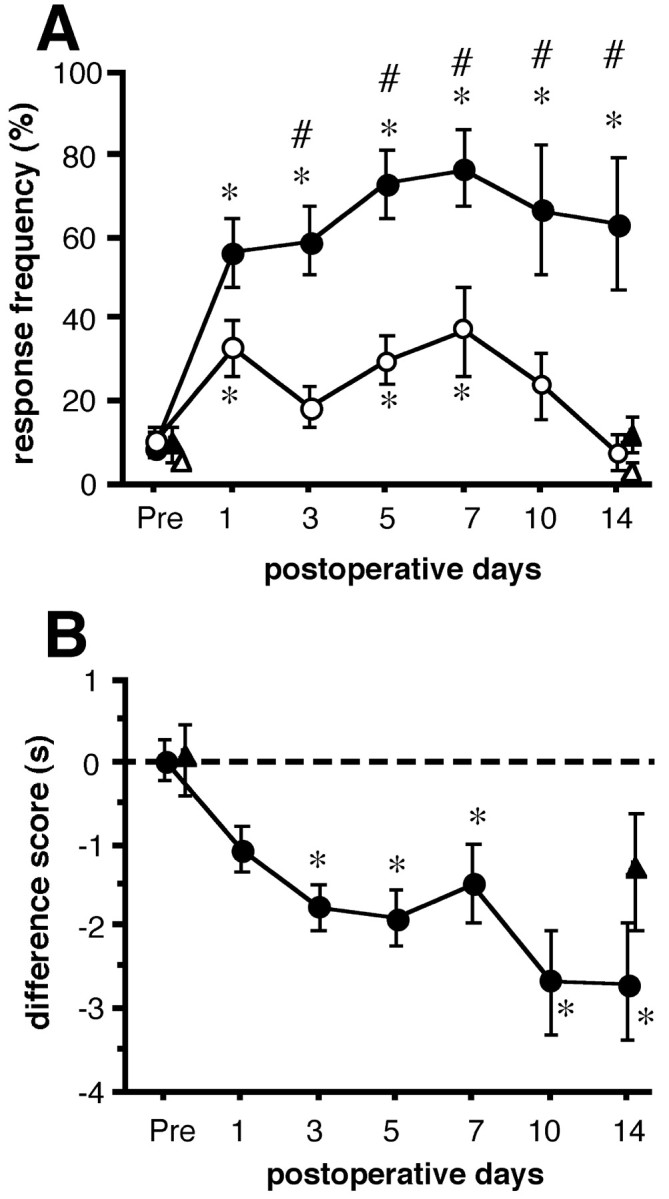Fig. 2.

Time course of neuropathic pain behaviors.A, The response frequencies of paw withdrawals to repeated mechanical stimuli applied to the pads of the hindpaws with a von Frey filament of 72.2 mN are expressed as a percentage (mean ± SEM) of trials. Data from the ipsilateral (closed symbols) and contralateral (open symbols) side of 20 rats that received L5 SPNL (circles) and five sham-operated rats (triangles) are shown. There was a significant group effect between the ipsilateral and contralateral side of the L5 SPNL group (p < 0.05, two-way repeated measures ANOVA). Number signs indicate significant differences from the contralateral side (p < 0.05, paired t test). Asterisks indicate significant differences from the preoperative value (Pre) (p < 0.05, one-way ANOVA followed by Fisher's PLSD). B is the difference score (latency on the operated side − latency on the contralateral side) to the radiant heat stimuli obtained from the same rats with the mechanical stimuli. Data obtained from 20 rats that received L5 SPNL (closed circles) and five sham-operated rats (closed triangles) are expressed as seconds (mean ± SEM). There was a significant change with time in the L5 SPNL group (p < 0.05, one-way ANOVA).Asterisks indicate significant difference from the preoperative value (Pre) (p< 0.05 by Fisher's PLSD).
